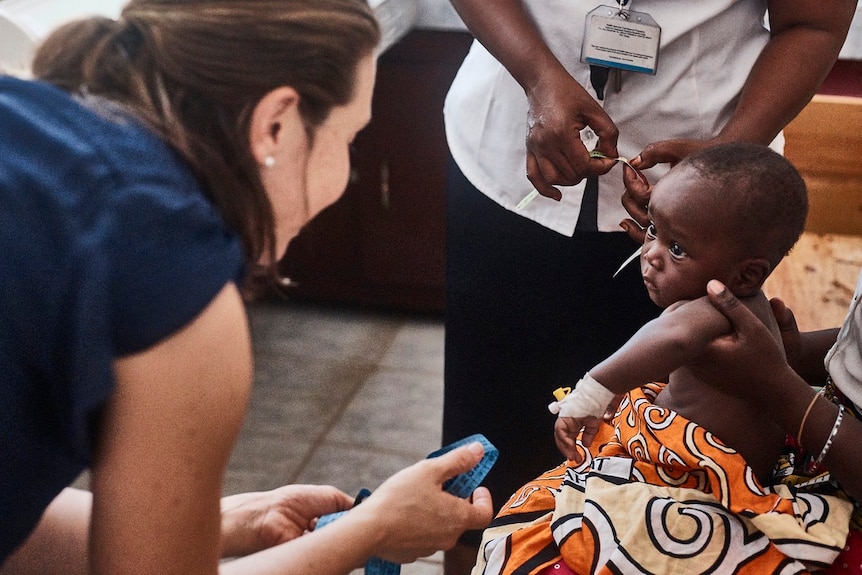Infection
New study shows ‘alarming rates’ of antibiotic resistant bacteria on Australia’s doorstep
More Australian children are contracting antibiotic-resistant bugs than a decade ago, as a new study shows common treatments are becoming less effective in the Asia-Pacific region.
Key points:
- Antimicrobial resistance (AMR) has been identified as a major global health concern
- A University of Sydney-led study shows one common antibiotic was effective in one in three cases of sepsis and meningitis
- The lead author says Australian children and babies are picking up resistant bugs more often
The study, led by the University of Sydney, showed some antibiotics recommended by the World Health Organization (WHO) for children had less than 50 per cent effectiveness in treating infections such as sepsis, pneumonia and meningitis.
It analysed data from 11 south-east Asian and Pacific countries, excluding high income nations, to find one particular drug, ceftriaxone, was only likely to treat one in three cases of sepsis or meningitis in newborn babies.
This drug is also widely used to treat common infections in Australian children, such as pneumonia and urinary tract infections.
Phoebe Williams, the study’s lead author, said many children and babies in the study who were treated with currently recommended antibiotics were dying because those drugs were “no longer working”.
“What we tried to do in the study is look at really common infections in children … to work out whether the currently recommended antibiotics that we’re using globally, and also in Australia, are effective in treating those infectious presentations and syndromes,” Dr Williams said.
“And what we found is when we look at the published data over the past 10 years … we found there’s really alarming rates of antimicrobial resistance within our region.”
Global health threat facing humanity
Antimicrobial resistant (AMR) bacteria was linked to 1.27 million deaths globally in 2019, according to a study published in the Lancet.
In 2021, the WHO declared that AMR is one of the top 10 global health threats facing humanity, and that it required urgent action to avoid up to 10 million deaths per year by 2050.
An estimated 3 million cases of sepsis occur globally in newborns each year, with up to 570,000 deaths.
Many are attributed to a lack of effective antibiotics to treat resistant bacteria.
Dr Williams said overuse of antibiotics in humans was not the only factor in AMR’s rise, but that medication used in veterinary practices and agriculture can lead to resistant bacteria also entering food and water supply chains.
She said growing resistance in countries like Indonesia and the Philippines, where thousands of children were dying in preventable circumstances, had brought the issue to “Australia’s doorstep”.
The infectious diseases expert said babies and children in Australia were showing signs of these infections earlier in life.
“We would probably have a challenging, multi-drug resistant infection to treat in children and babies at least once a month now in Australia,” she said. “Whereas 10 years ago it might have been a lot more rare than that.
“And one of the more difficult things is that most of the infections we do see are in very young children and babies. So that shows they are being colonised with these bugs very early in their life.
“Once you’re colonised with these bugs that lots of antibiotics don’t work for it, it means that every time we use another antibiotic, once that child has another infection, we might have nothing that works.”
The study, which collated data from 6,648 bacterial isolates and 84 publications, concluded the WHO’s guidelines for antibacterial treatments were out of date and did not reflect today’s conditions.
Children were not getting access to new antibiotics, with only four of 40 medications licensed since 2000 approved for use in babies, Dr Williams said.
She drew a comparison between her previous paper published in 2017, which looked at the effectiveness of ceftriaxone among children in sub-Saharan Africa.
It found one-in-six babies with meningitis were resistant to the treatment, with the new study showing two out of three treatments were likely to be ineffective.
“That shows in six years how quickly that problem is spreading and emerging,” she said.
“Papers like this are a real wake up call to tell us that it’s not just a problem for this century but it’s killing babies and children now.”
Australian data from the study will be published in coming months.

